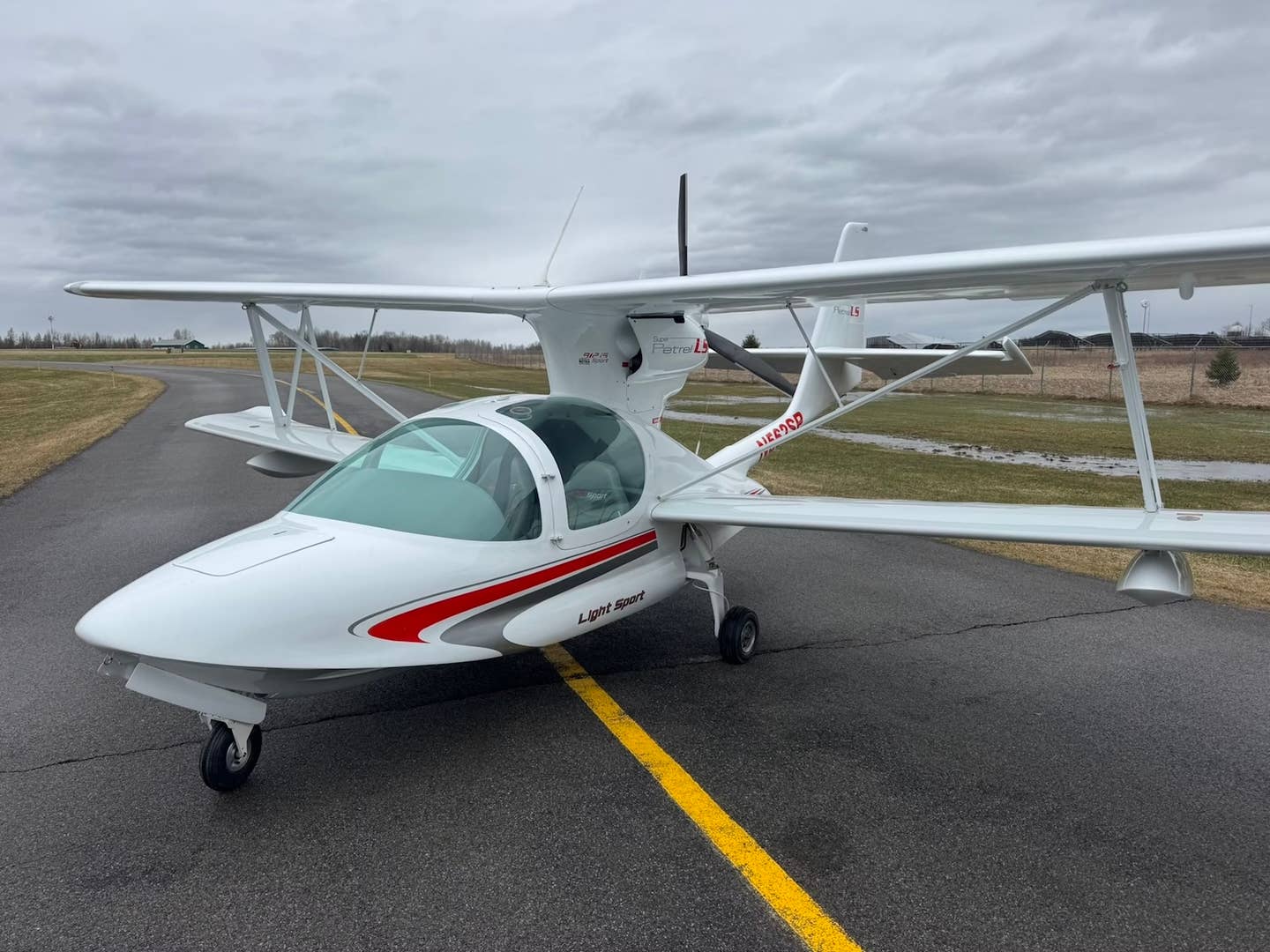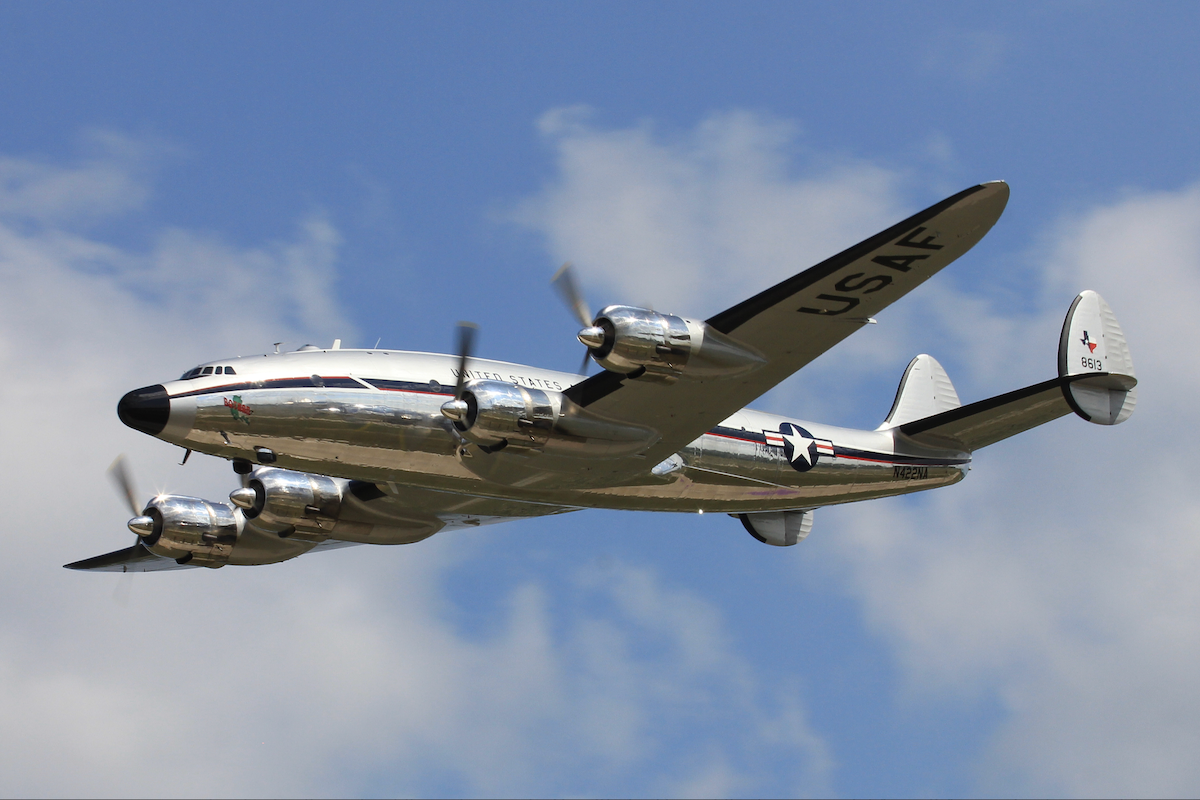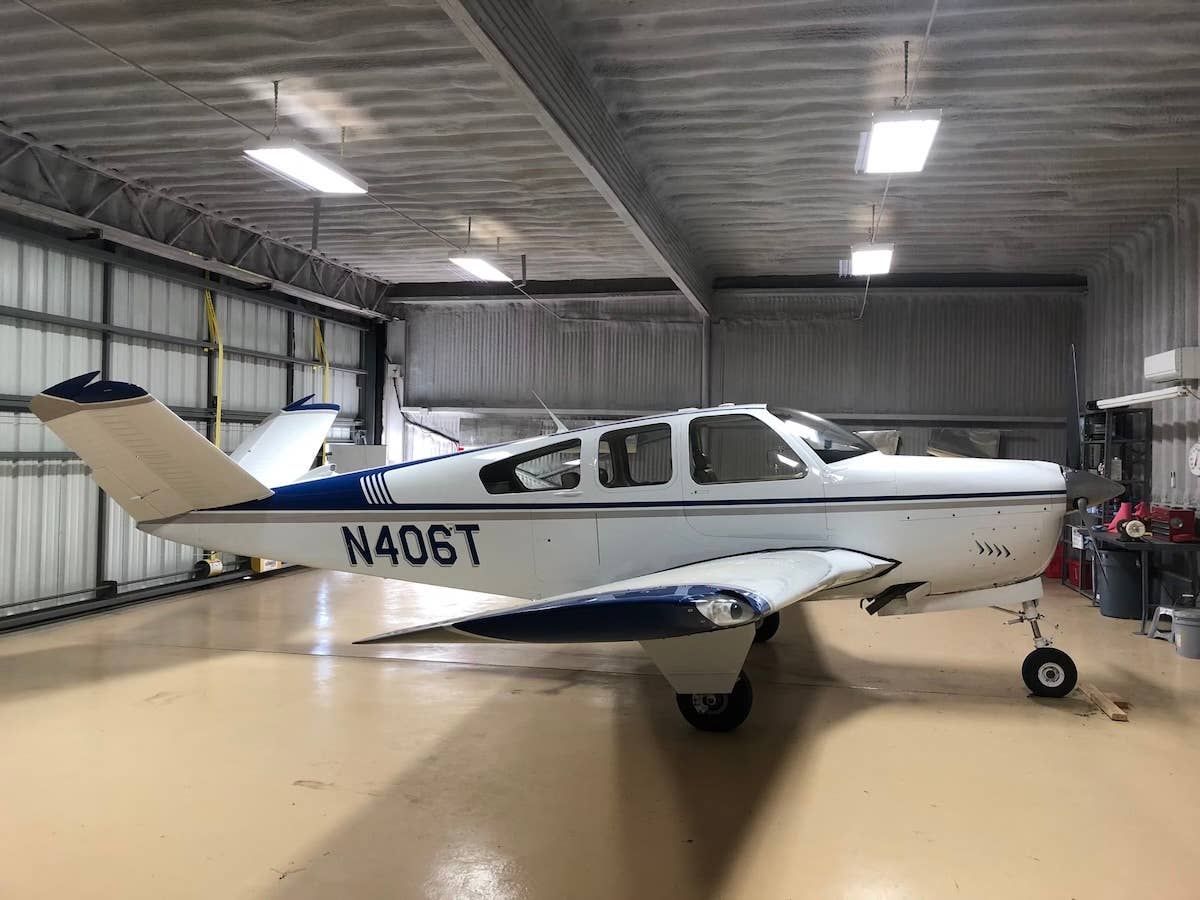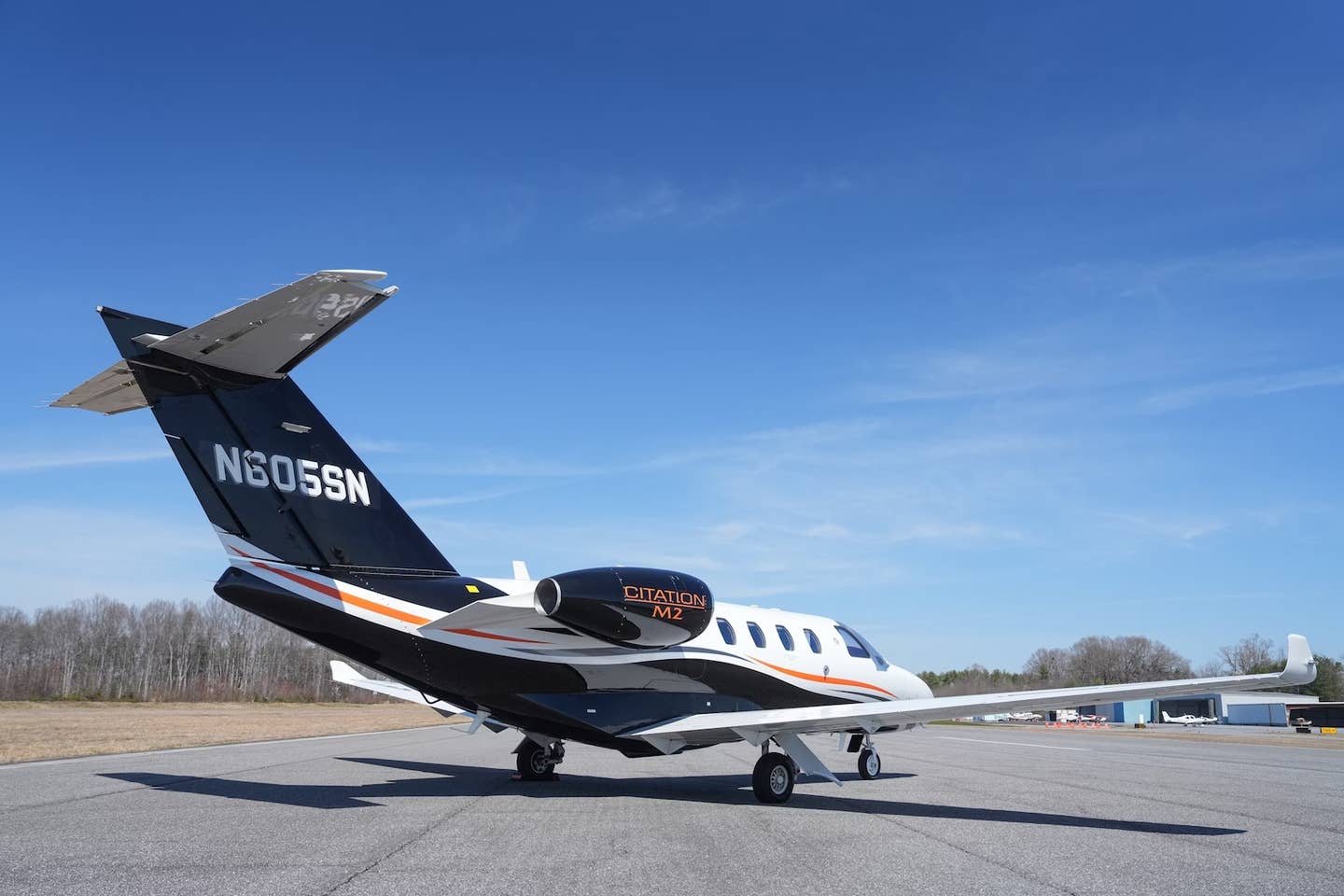
This computer-generated rendition of Bombardier’s new Learjet Model 85 is amazingly close to the “real” thing. Bombardier
When I first heard that Learjet would build its new Model 85 entirely from composite materials, I wondered what management there was thinking. So far there has not been an FAR Part 25 transport airplane built even mostly from composites. And the history of turbine-powered composite airplanes is sketchy at best.
The Starship, of course, remains the granddaddy of all composite airplane disasters. Back in the 1980s Beech spent somewhere between $800 million and $1 billion to build the factory, make the tooling and create the procedures to certify and manufacture the first turbine-powered all-composite airplane.
The Starship was designed for a maximum takeoff weight of 12,500 pounds, so it would be certified under the somewhat less demanding rules of FAR Part 23, which govern small airplanes. But the expected weight savings did not materialize so the Starship blew right through the 12,500-pound certification cap, missing the weight goal by 2,400 pounds. Only introduction of the Commuter Category of Part 23, which allows higher weights, "saved" the program.
The Starship missed every design goal, being slower, achieving shorter range and requiring longer takeoff runways and smaller payloads, and most of the problems can be blamed on its way-too-high empty weight. Only about 50 were built, and only a few of that number sold with the rest being leased. Beech attempted to acquire the airplanes it didn't own a few years ago to retire the fleet.
The Starship did demonstrate that you can build and certify an airplane made from carbon fiber, and it also went a long way in proving the strength and durability of the material. One Starship went off the end of a runway at high speed in a takeoff accident that was blamed on airframe ice. The airplane had impressively little damage and nobody was injured.
After the Starship episode, Beech changed its composite focus to fuselages only. It invested heavily in automated machines that wind carbon fibers around a mandrel. The entire assembly is cured in a huge autoclave. The fuselage of the Premier IA is made this way, and so is the fuselage of the much larger Hawker 4000.
I don't know if you can blame the composite fuselage, but the development program of the Hawker Horizon - as the 4000 was originally named - turned out to be many years behind schedule. It was among the first of the so-called super midsize jets to be announced but the last to enter service. Even now progress in delivering the Horizon is very slow.
Adam Aircraft also must be included on the list of carbon fiber failures. Adam was a startup company, so it's unfair to blame the problems of carbon fiber construction alone for its failure, but the all-carbon A500 did miss its empty weight target by a lot, and thus missed all of its performance goals
.
If that weren't damning enough history for composites, now we have mighty Boeing and the 787 with its filament-wound carbon fiber fuselage. The last thing I expected was for the airplane to have structural strength problems, but the carbon fuselage fell below design limits during static testing. The 787 is more than two years behind schedule and who knows how many millions, or is it billions, over budget. And nobody knows for sure yet if it will make its empty weight targets. Is carbon structure to blame? All I can say is that, as in the Starship and Horizon, carbon is at the scene of the crime at Boeing.
So when Learjet invited me along on a tour of a new facility in Querétaro, Mexico, to see where and how the new Learjet 85 will be built from carbon fiber, I was very interested to see how it planned to avoid the mistakes of the past. I am happy to report Learjet is acutely aware of composite history and does have sound ideas on how to avoid those mistakes.
The first encouraging sign I saw was a person, not a construction technique. Bombardier has hired David Coleal as the vice president and general manager of its Learjet division. David has presided over the successful construction of more composite airplanes than anybody. When Arcapita invested in and took control of Cirrus in 2001, it immediately hired Coleal away from Toyota, where he was directing the assembly of automobiles, to establish manufacturing procedures and techniques at Cirrus.
At Cirrus, Coleal led the way as the company built nearly 4,000 composite airplanes, including total redesigns of the fundamental structure that eliminated dozens of parts. He applied new materials such as a one-piece carbon fiber wing spar in place of a multi-element fiberglass design. He was able to find ways to take hundreds of hours of labor out of the construction process. Without a doubt his leadership was crucial to success.
What I like best about David is that he doesn't subscribe to "black belts" and Six Sigma and other programs to achieve manufacturing success. Instead he says that lean manufacturing is nothing more than applying common sense with uncommon diligence and persistence.
Another fact that gives me great hope for the success of the Learjet 85 is that Coleal and his design and manufacturing team do not expect carbon fiber to deliver any weight savings. In fact, they told me they are aiming for and would be happy with a weight equal to an aluminum jet of the same size. That realistic attitude can save his entire program from the nasty surprises that follow a miss in empty weight. When weight is too high, all performance and payload suffer so you need more power, and that requires more fuel, which adds even more weight. A fat airplane is doomed.
Though Learjet will make virtually all of the primary structure of the 85 from carbon fiber, it is using very conservative techniques in construction. For example, components will be built using hand layup of prepreg carbon cloth. Prepreg is short for preimpregnated, meaning the resin that will bond the layers together has already been applied to the material. Cirrus uses the same construction technique with prepreg fiberglass.
In an alternate technique, wet layup, dry fibers are placed in a mold and resin is then applied. The wet layup technique is hard to control because the application of resin is not uniform. The result is finished components of varying strength and weight because of more or less resin content.
The Starship also was built mostly using hand layup of prepreg carbon, but the materials were vastly improved during the past 25 years. Prepreg material must be stored in a freezer until ready for use to prevent premature curing. In the Starship days, the material had to be cut and placed in the mold in a matter of hours for good results. Now prepreg carbon can be out of the freezer for days, so the rush from freezer to layup is no longer a big issue. The current prepreg material is also much more flexible, so it conforms to complicated shapes and small radius curves. And there is no need for an autoclave to both pressurize and heat to cure the finished part. Learjet will draw a vacuum in a plastic tent that covers the carbon plies to squeeze them tightly into the tool. The part is then cured in an oven at only a few hundred degrees. This process saves a lot of time and a huge amount of cost compared with the old autoclave process.
Learjet will not rely on bonding — glue, in other words — to hold most of the completed structures together. Bonding is an elegant method for assembling composite parts into a structure such as a wing, but it is hard to be absolutely certain that internal joints have bonded perfectly. Complicated noninvasive inspection processes are needed to measure the integrity of the bonded joint, and there must also be extra strength added to all of the components to carry the load in case a bonding void goes undetected. Instead, Learjet will bond only part of a structure so that it can be easily inspected, and then the remaining parts will be mechanically fastened.
For example, for the horizontal tail, one skin, spars and ribs will be bonded together leaving the other side open for detailed inspection. Then the other skin will be mechanically fastened in place just as it would be if it were a metal skin. Bombardier is already using this technique to build the horizontal tail for the Global Express.
To build the 85's carbon fiber wing — a first for a civilian jet as far as I know — Learjet will reduce the risks even further by using aluminum ribs and mechanically fastening the entire structure. The metal ribs can be made with great precision and accept the fasteners easily. But there will still be a large number of piece parts eliminated because stringers and other stiffeners can be bonded to the wing skins prior to assembly. And, of course, the spars will be a single carbon structure instead of an assembly of caps and web. Spars lend themselves well to composite construction because the number of layers of carbon fiber can be easily adjusted as the load bearing requirements change along the length of the spar.
So, if much of the Learjet 85 will be mechanically fastened together much like a metal airplane, why use carbon in the first place? The answer is to vastly reduce the number of individual pieces it takes to build an airframe and thus reduce, or at least help to control, labor and material costs. And maybe someday when the technology advances, there can also be substantial weight savings.
The factory under construction in Mexico is expressly designed to build carbon fiber airplanes, and a growing work force has already completed training and is developing and practicing exact production techniques to be used. The carbon airframes will be trucked to Learjet's home in Wichita, Kansas, for final assembly, interior completion, paint and flight testing. It's similar to a process that has been used for several years to produce the Learjet 40 series in which the wings and fuselage are built at other Bombardier divisions and completed in Wichita.
The design goals of the 85 are very appealing, with 3,000 nm range while cruising at Mach .78 and with 5-foot-11-inch headroom in the cabin, which can seat as many as eight. High-speed cruise is Mach .82 and the ceiling will be 49,000 feet. The cockpit is Collins Pro Line Fusion, and the engines are Pratt 307Bs. The Learjet 85 promises performance and cabin comfort that is ahead of the traditional midsize jet, but at a price below the super midsize jets. And with its wraparound windshields, pointy nose and swept tail, it visibly carries the Learjet family genes.
It seems to me that instead of ignoring the history of composite airplane problems, or believing that it can do better where others have failed, Learjet has taken the challenge head-on with a conservative belt-and-suspenders solution to composites' potential failings. The Learjet 85 is not billed as a miracle of lightweight or super-slippery smooth skins, but as a solid design that can fit into a niche in performance, range and cabin comfort that is now unfilled. The fact that Bombardier is spending hundreds of millions of dollars developing an all-new jet using new materials and procedures at a time when the business jet market is at its lowest ebb in decades speaks volumes about the company's confidence in the airplane and the people who are creating it. With the first 85 delivery scheduled for 2013, Learjet's timing should be good to catch a market rebound.

Sign-up for newsletters & special offers!
Get the latest FLYING stories & special offers delivered directly to your inbox






